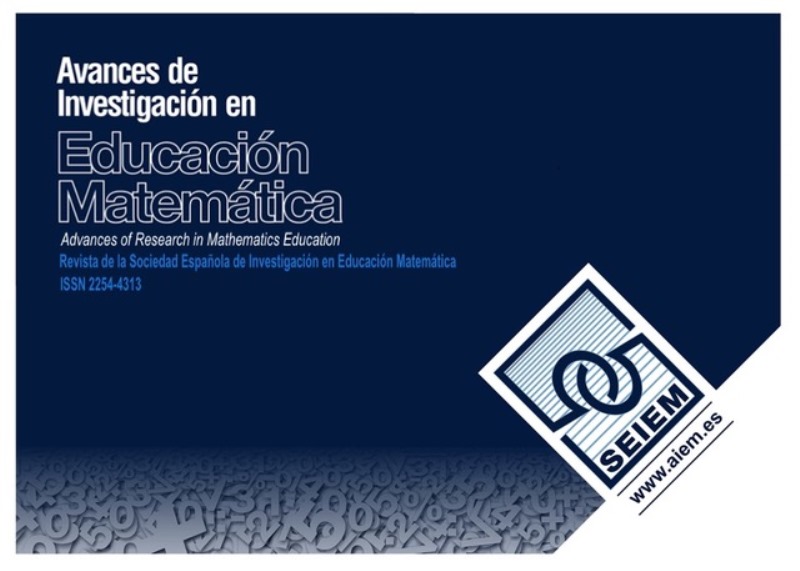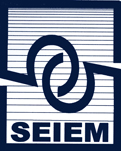Problem Posing Integrated into a Study Process on the Construction of Solids
DOI:
https://doi.org/10.35763/aiem28.7559Keywords:
Anthropological Theory of the Didactics, Problem posing, Study and research path, Modality of study, Question and answer mapsAbstract
In this study, developed within the framework of the Anthropological Theory of Didactics, we present and discuss the potential of Study and Research Paths as didactic means of a modality of study that, governed by the paradigm of mathematical modelling, promotes the integration of problem posing in the mathematical activity of students considered globally. Working with students in the third year of compulsory secondary education, we study the spatial problem of packaging design within the field of determination and construction of geometric solids. We analyse the crucial role played by the questions and answers maps elaborated by the students as evidence of the posing of new problems, and we show some institutional constraints that hinder the implementation of this new modality of study.
Downloads
References
Barquero, B., Bosch, M., & Gascón, J. (2011). Los recorridos de estudio e investigación y la modelización matemática en la enseñanza universitaria de las ciencias experimentales. Enseñanza de las Ciencias, 29(3), 339–352. https://doi.org/10.5565/rev/ec/v29n3.519
Bosch, M. (2018). Study and research paths: A model for inquiry. En B. Sirakov, P. N. de Souza, & M. Viana (Eds.), Proceedings of the International Congress of Mathematics (Vol. 3, pp. 4001–4022). https://doi.org/10.1142/9789813272880_0210
Bosch, M., Fonseca, C., & Gascón, J. (2004). Incompletitud de las organizaciones matemáticas locales en las instituciones escolares. Recherches en Didactique des Mathématiques, 24, 1-47.
Bosch, M., & Winsløw, C. (2015). Linking problem solving and learning contents: The challenge of self-sustained study and research processes. Recherches en Didactique des Mathématiques, 35(3), 357–401.
Brousseau, G. (1997). Theory of didactical situations in mathematics. Kluwer Academic Publishers.
Cai, J., & Rott, B. (2024). On understanding mathematical problem-posing processes. ZDM – Mathematics Education, 56, 61–71.
https://doi.org/10.1007/s11858-023-01536-w
Chevallard, Y. (1992). Fundamental concepts in didactics: Perspectives provided by an anthropological approach. En R. Douady & A. Mercier (Eds.), Recherches en Didactique des Mathématiques (Selected Papers, pp. 131–167). La Pensée Sauvage.
Chevallard, Y. (2006). Steps towards a new epistemology in mathematics education. En M. Bosch (Ed.), Proceedings of the 4th Conference of the European Society for Research in Mathematics Education (CERME 4) (pp. 21–30). FUNDEMI-IQS.
Chevallard, Y. (2013). Enseñar matemáticas en la sociedad de mañana: Alegato a favor de un contraparadigma emergente. Journal of Research in Mathematics Education, 2(2), 161–182. https://doi.org/10.4471/redimat.2013.26
Chevallard, Y., Bosch, M., & Gascón, J. (1997). Estudiar matemáticas. El eslabón perdido entre la enseñanza y el aprendizaje. ICE(UB)-Horsori. http://hdl.handle.net/2445/174473
Florensa, I., García, F. J., & Sala, G. (2020). Condiciones para la enseñanza de la modelización matemática. Estudios de caso en distintos niveles educativos. AIEM, 17, 21–37. https://doi.org/10.35763/aiem.v0i17.31
García, F. J., Gascón, J., Ruiz Higueras, L., & Bosch, M. (2006). Mathematical modelling as a tool for the connection of school mathematics. ZDM Mathematics Education, 38(3), 226–246.
Gascón, J. (1994). El papel de la resolución de problemas en la enseñanza de las matemáticas. Educación Matemática, 6(3), 37–51.
Gascón, J. (2024). Contributions of the anthropological theory of the didactic to the epistemological programme of research in mathematics education. ZDM Mathematics Education, 56(6), 1319–1330.
https://doi.org/10.1007/s11858-024-01563-1
Gascón, J., & Nicolás, P. (2021). Incidencia de los paradigmas didácticos sobre la investigación didáctica y la práctica docente. Educación Matemática, 33(1), 7–40. https://doi.org/10.24844/EM3301.01
Hansen, R., & Hana, G. M. (2015). Problem posing from a modelling perspective. En F. M. Singer, N. Ellerton, & J. Cai (Eds.), Mathematical problem posing: From research to effective practice (pp. 35–46). Springer.
Hartmann, L.-M., Krawitz, J., & Schukajlow, S. (2021). Create your own problem! When given descriptions of real-world situations, do students pose and solve modelling problems? ZDM Mathematics Education, 53(4), 919–935.
Hartmann, L.-M., Krawitz, J., & Schukajlow, S. (2023). Posing and solving modelling problems—extending the modelling process from a problem posing perspective. Journal Für Mathematik-Didaktik, 44(2), 533–561.
Kilpatrick, J. (1987). Problem formulating: Where do good problems come from? En A. H. Schoenfeld (Ed.), Cognitive science and mathematics education (pp. 123–147). Lawrence Erlbaum Associates.
Liljedahl, P., & Cai, J. (2021). Empirical research on problem solving and problem posing: A look at the state of the art. ZDM Mathematics Education, 53, 723–735. https://doi.org/10.1007/s11858-021-01291-w
Ministerio de Educación y Formación Profesional. (2022). Real Decreto 2017/2022, de 29 de marzo, por el que se establece la ordenación y las enseñanzas mínimas de la Educación Secundaria Obligatoria. https://www.boe.es/eli/es/rd/2022/03/29/217/con
Pólya, G. (1965). Cómo plantear y resolver problemas (J. Zugazagoitia, Trad.). Trillas. (Obra original publicada en 1945)
Rojas, C. (2024). Análisis de procesos didácticos sobre la determinación y construcción de sólidos en la educación secundaria [Tesis doctoral sin publicar]. Universidad Complutense de Madrid. https://hdl.handle.net/20.500.14352/108277
Rojas, C., & Sierra, T. (2021). Restricciones institucionales que dificultan la modelización espacio-geométrica en la enseñanza secundaria. AIEM, 20, 41–63. https://doi.org/10.35763/aiem20.4031
Salin, M. H. (2004). La enseñanza del espacio y la geometría en la enseñanza elemental. En C. Chamorro (Ed.), Números, formas y volúmenes en el entorno del niño (pp. 37–80). MEC.
Downloads
Published
How to Cite
Issue
Section
License
Copyright (c) 2025 Carlos Rojas Suárez, Tomás Ángel Sierra Delgado, Josep Gascón Pérez

This work is licensed under a Creative Commons Attribution 4.0 International License.
The articles published in this journal are under a license Creative Commons: By 4.0 España from number 21 (2022).
Authors who publish with this journal agree to the following terms:
- Authors retain copyright and keep the acknowledgement of authorship.
- The texts published in this journal are – unless indicated otherwise – covered by the Creative Commons Attribution 4.0 international licence. You may copy, distribute, transmit and adapt the work, provided you attribute it (authorship, journal name, publisher) in the manner specified by the author(s) or licensor(s). The full text of the licence can be consulted here: http://creativecommons.org/licenses/by-nc/4.0.
- Authors are able to enter into separate, additional contractual arrangements for the non-exclusive distribution of the journal's published version of the work (e.g., post it to an institutional repository or publish it in a book), with an acknowledgement of its initial publication in this journal.
- Authors are permitted and encouraged to post their work online (e.g., in institutional repositories or on their website) prior to and during the submission process, as it can lead to productive exchanges, as well as earlier and greater citation of published work (See The Effect of Open Access).
Funding data
-
Agencia Estatal de Investigación
Grant numbers PID2021-126717NB-C31 -
Agencia Estatal de Investigación
Grant numbers PID2021-126717NB-C32









